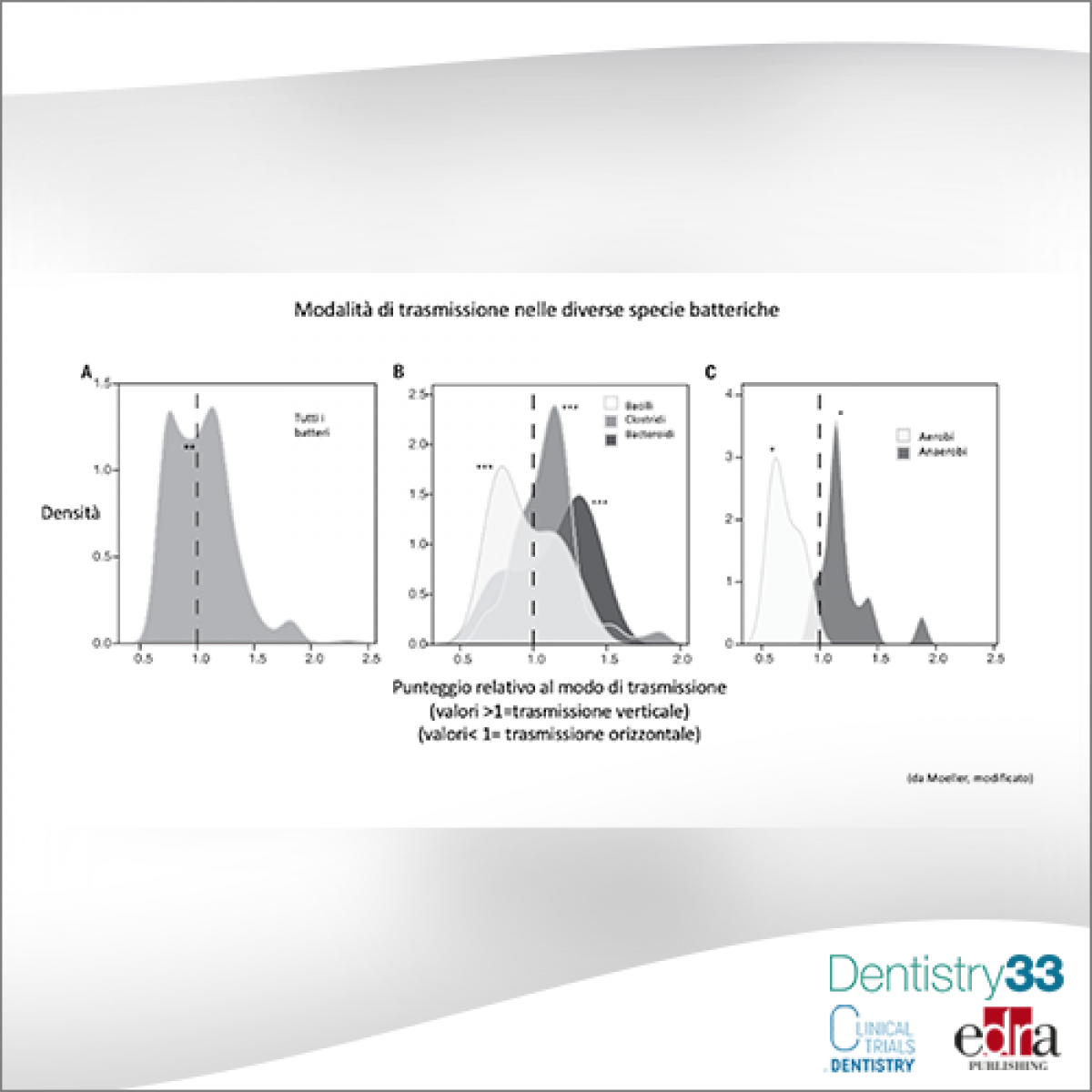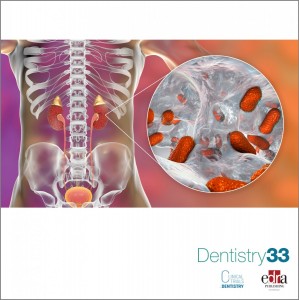
Focal infection theory: a new modernity in view of microbiota recent studies?
Authors: Carlo Fornaini, Francesco Di Pierro
The “Focal Infection Theory”, which was very popular in the 1930s, hypothesized the possibility that an infection of a specific zone might migrate to other different organs, even not contiguous, causing diseases at a distance; this theory was responsible for very invasive preventive treatments, such as indiscriminate tooth extractions and tonsillectomies; it was abandoned due to the scanty scientific evidence.
Today, however, thanks to new epidemiological studies, several relationships between oral infections and many systemic diseases have been demonstrated.
The aim of this narrative review of the literature is to describe the microbiotic movements between the different zones of the body and to suggest a new approach to infections and their systemic effects prevention.
Materials and Methods
Considering microbiotics as “microbic consortiums, mainly represented by bacteria, which move in space and time”, their movements were described starting from phylogeny and then defining the vertical transmission (mother-child) and horizontal transmission (inside family) lines, as well as the existing paths between different districts inside the same person (haematogenic, entero-mammary and ascending from vagina to uterus).
Results and Conclusions
Even if reconsidered in view of the recent advances in the microbiological field, the theory of the “focal infection” may still be very alive, although the clinical perspectives, and particularly the possibility to carry out both proper prevention and the most conservative possible therapy, have completely changed its prognosis: in fact, the great limit of this theory consisted in the extremism of the therapeutic choices, mainly resulting in massive teeth extractions due to the scanty scientific and technologic knowledge of that time.
Assuming that microbic interconnections are largely structured inside the host, and that it is possible to divide microbiotics into primary (oral, fecal, vaginal, cutaneous and nasal) and derived (pulmonary, endometrial, urinary bladdery, mammary and prostatic), the successful therapeutic approach may be represented by the possibility to contrast the former by a bacterial therapy, thus taking advantage of the eubiotic dominances which are known for them, in order to better “construct” the latter.
Clinical significance
Several probiotics strains are available today for dentists, which may be orally assumed for modifying, in a eubiotic way, the oral microbiotic; many studies have confirmed that they may be very effective to control oral diseases such as decay and periodontitis.
Among these, K12 strain seems to be very interesting: it derives from Streptococcus Salvarius, originally used against Streptococcus Pyogenes infections and subsequently suggested for a great number of indications; a great amount of research has in fact confirmed its efficacy to treat pharyngitis, tonsillitis and otitis both in child and adult, in treating periodontitis and to eliminate halitosis; moreover, a very recent study suggested its successful employment in the treatment of Oral Lichen Planus.
It may be therefore possible to suppose for it a role beyond oral cavity, for modifying in eubiotic way other different organs of the body, even not close to the head-neck district.
 Related articles
Related articles
Oral Hygiene & Prevention 23 February 2022
Focal infection theory: a new modernity in view of microbiota recent studies?
Authors: Carlo Fornaini, Francesco Di Pierro
The “Focal Infection Theory”, very popular in 1930s, hypothesized the possibility that an infection of a specific zone might migrate to other different organs, even not contiguous, causing...
Peri-implantitis is associated with bacterial plaque biofilms and with patients who have a history of periodontitis. Smoking is a risk factor for periodontitis, but the relationship between smoking...
Oral Hygiene & Prevention 09 February 2023
Scientists find link between oral microbiome, depression and anxiety
Researchers from Xi'an Jiaotong University conducted a case-control study and found a link between specific oral bacteria and the development of depression and anxiety.
Periodontology 07 December 2020
According to the new 2018 classification scheme, the diseases previously recognized as chronic (CP) or aggressive (AgP) periodontitis were grouped under a single category named periodontitis. A wide...
 Read more
Read more
Editorials 10 October 2025
With proud smiles and crisp white coats, ninety-three learners from the DDS Class of 2029 and the International Dentist Pathway Class of 2028 marked the start of their dental careers at the UCSF...
Periodontology 10 October 2025
Continuous professional development (CPD) in Periodontology refers to the overall framework of opportunities that facilitate a life-long learning practice, driven by the learner-practitioner and...
TheraBreath, the #1 alcohol-free mouthwash brand in the U.S.*, has introduced a new line of dentist-formulated, clinically tested toothpastes designed to support professional oral care...
News 10 October 2025
New officers and trustees were installed at the Minnesota Dental Association’s Leadership Conference on September 19 in Minneapolis.
News 10 October 2025
Smartee Denti-Technology today announced that Professor Gang Shen, its Chief Scientist and Executive President of TaiKang ByBo Dental, has once again been named to the World’s Top 2% Scientists...













